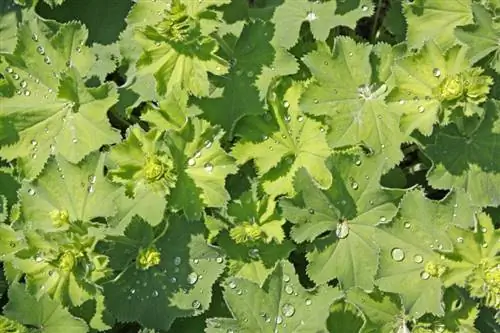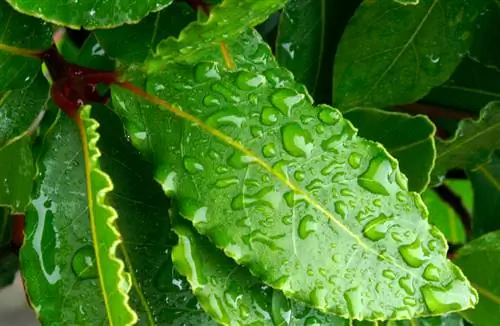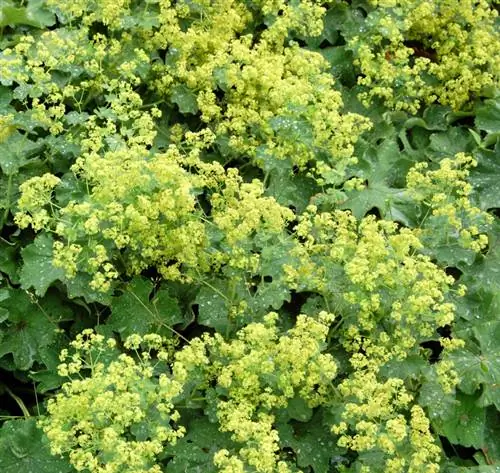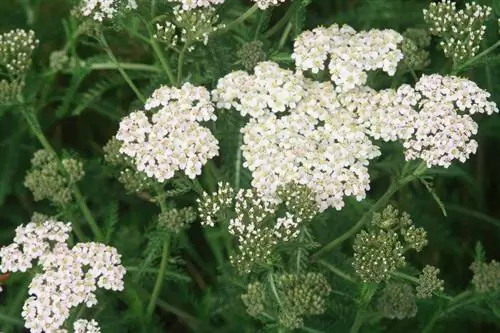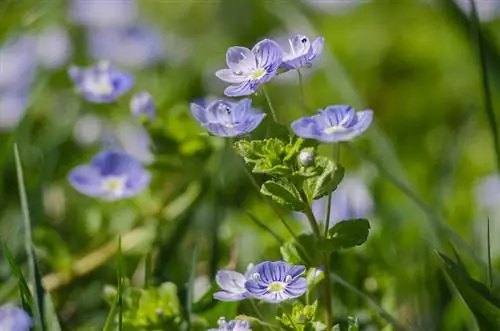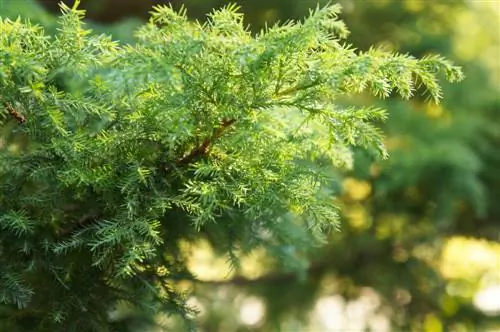- Author admin [email protected].
- Public 2023-12-16 16:46.
- Last modified 2025-01-23 11:20.
Lady's Mantle - you may have met him before or you are flirting with him. As an herb, it is known for its extremely undemanding and easy-care nature. But if you really want to get to know him, you should study him in more detail
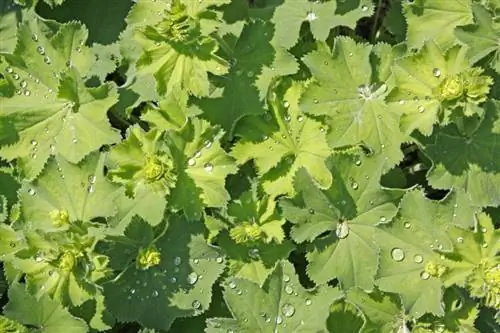
What is a lady's mantle profile?
Lady's mantle belongs to the rose family and is a frost-resistant, herbaceous plant. It grows upright, has lobed foliage and flowers yellow-green from June to July. Lady's mantle has healing effects such as antispasmodic and blood purifying.
Short and sweet: The most important facts
- Plant family and genus: Rosaceae, Alchemilla
- Origin: Eastern Europe, Asia
- Winter hardiness: absolutely frost-proof
- Growth: upright, low, herbaceous
- Leaves: rounded to kidney-shaped, lobed
- Flowering: June to July (re-blooming until September), panicles, yellow-green
- Fruits: single-seeded nuts
- Location: sunny to shady
- Soil: moderately nutrient-rich, loamy, chalky
- Propagation: division, sowing
- Use: ornamental plant, borders, culinary herb, medicinal plant
What his names are all about
The woman's mantle wraps itself around the world of women like a protective cloak. Thanks to a plant hormone similar to female progesterone, it can be used to treat many of the problems of being a woman, such as menstrual pain, heavy bleeding and menopausal problems.
The botanical name 'Alchemilla' is derived from 'alchemist's herb'. This is what scientists liked to call the lady's mantle during the Middle Ages. The scientists were amazed by the drops of dew - a natural distillate from the leaves - that formed on the leaves every morning.
From bottom to top
A creeping rhizome spreads through the soil. A rosette-like growth emerges from it on the surface. It grows up to 40 cm high and 50 cm wide, the lady's mantle.
Its rounded to kidney-shaped foliage is between 5 and 15 cm wide, is lobed and gently hairy on the underside. Depending on the species, the upper side of the leaves is bare to hairy. In June, the foliage is enthroned by long inflorescences. They are panicle-like and lateral inflorescences. The individual flowers are fourfold and petalless.
A top class medicinal herb
Both the leaves and flowers of lady's mantle are often used for medicinal purposes. They are edible and should be harvested when the flowering period begins.
Whether it's a tea, a smoothie, an ointment or a mouthwash, the herb, which can be used both internally and externally, works among other things:
- antispasmodic
- blood purifying
- promotes blood circulation
- anti-inflammatory
- pain relieving
- digestive
- antibacterial
- calming
Tips & Tricks
Lady's mantle is still known under the names silver mantle, feverfew, Liebfrauenmantel and Allerfrauenheil.

